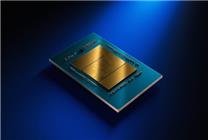iPhone 17 Standard Version Production Boost: Key Insights
Summary:
- Apple has ramped up production of the iPhone 17 standard version by 40% due to unexpected strong pre-sale performance.
- The new model features advanced specifications, making it an attractive choice for budget-conscious consumers.
- The iPhone 17’s pricing and subsidy incentives in China have further intensified demand.
Recent reports indicate that Apple is significantly increasing the production of the iPhone 17 standard version, following its impressive pre-sale performance. The tech giant has requested Luxshare Precision, one of its primary original equipment manufacturers (OEMs), to enhance daily production by approximately 40%. Additionally, several non-electronic parts suppliers have been instructed to increase their output by about 30% to meet this rising demand.
Market Shifts in Production Expectations
Apple anticipated that the standard version of the iPhone 17 would represent around 25% of total production volume in early 2025, with the Pro and Pro Max versions accounting for 65%. The company also planned to introduce a new model, the iPhone Air, which would occupy the remaining 10%. However, recent developments suggest a growing preference among consumers for more budget-friendly options, prompting the company to reassess its production strategies.
Advancements Drive Consumer Interest
One of the key factors behind the strong demand for the iPhone 17 standard version, priced at ¥5,999, is its array of high-end features. This model introduces a ProMotion high-refresh-rate display, an advanced camera system, and the Center Stage functionality for its front camera—innovations that were previously exclusive to upscale models. These enhancements significantly boost the device’s value proposition, drawing in a broader spectrum of consumers who might otherwise opt for higher-priced alternatives.
The Role of Subsidies in Demand Surge
The iPhone 17 standard version has seen particularly robust demand in China, fueled by specific market conditions. Currently, there is a 15% subsidy available for electronic products priced below RMB 6,000. Apple’s strategic pricing at RMB 5,999 qualifies the iPhone 17 for this subsidy, making it an enticing choice for Chinese consumers. This financial incentive undoubtedly plays a crucial role in driving the model’s popularity in the region.
Strategic Positioning Against Competitors
During the recent "Foreign Super Burning" press conference, Apple intentionally positioned the iPhone Air as a "non-Pro Pro" to create ambiguity among consumers. This marketing approach aims to assist users in their decision-making process. However, the price point of the iPhone Air may inadvertently encourage some consumers to choose the more competitively priced and upgraded standard version of the iPhone 17 instead.
Production Adjustments Based on Consumer Trends
It’s worth noting that Apple traditionally adjusts its production schedules based on pre-sale trends. This practice makes it challenging to ascertain which model will ultimately lead in sales figures. Yet, the recent uptick in interest for the standard model may serve as a critical indicator for Apple’s future product line strategies. As consumer behavior shifts, Apple will likely continue to fine-tune its approach to production and marketing.
Conclusion
The evolving landscape of consumer preferences is reshaping Apple’s production strategies, particularly as it pertains to the iPhone 17 standard version. With a notable increase in production due to high demand, advanced features, and favorable pricing structures, this model is poised to capture significant market share. As Apple navigates these changes, it remains focused on delivering value while adapting to consumer needs in a competitive market.
By understanding the dynamics at play in Apple’s latest iPhone strategy, consumers and investors alike can gain valuable insights into the tech giant’s future trajectory, particularly regarding its product offerings and market positioning.





